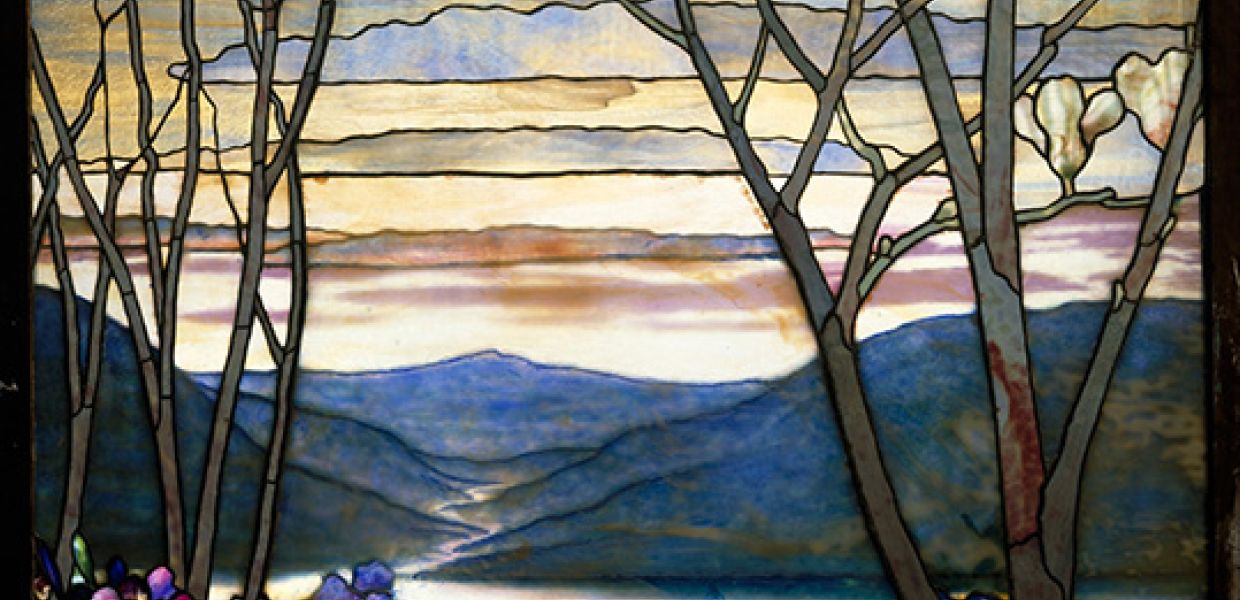Why the Metropolitan Museum of Art is embracing open access
In February 2017, The Metropolitan Museum of Art (The Met) made over 375,000 images of public domain artworks in its collections available for use and remix with Creative Commons Zero. Identifying data for the museum’s entire publicly available digitized collection was also made available on GitHub development platform. We asked Neal Stimler, Program Manager for Content Partnerships, from The Metropolitan Museum of Art, to tell us what is driving these projects.

- Title:
- Magnolias and Irises
- Creator:
- Louis Comfort Tiffany
- Institution:
- The Metropolitan Museum of Art
- Copyright:
- CC0
Why is it important for these resources to be available freely online ?
Sharing the collection is a fundamental aspect of The Met’s mission ‘to connect people to creativity, knowledge, and ideas.’ The Met Open Access initiative, launched on 7 February 2017, helps achieve this mission by making images and data from the Museum's collection widely available on the internet, and usable to the broadest possible public. As Ryan Merkley, CEO of Creative Commons, noted at the Met Open Access launch event, ‘it's about advancing the human cause of equity and access for everyone to the greatest works of history.’
Why are these resources available outside of the Met’s website?
Partnerships enhance the discoverability and searchability of the Museum's collection, while creating opportunities to foster deeper connections. The Met’s collaboration with partners help extend the impact of the Met's collection into communities eager to engage and utilize art in both familiar and new ways. Those interested in the Museum can access and engage with the collection whether or not they visit of the Museum’s three physical locations. And, access to the collection can happen on platforms outside or-as well as on-the Museum’s own website.
The Met's partnership with Creative Commons not only helped introduce Creative Commons Zero, but also contributed to Creative Commons Search, which, "...allows for high-quality content from the commons to surface in a more seamless and accessible way”. The Met is excited to be part of Creative Commons Search, along with allied institutions whose collections can also be discovered on the platform, like Europeana’s.
In partnership with the Wikimedia Foundation and community members, we built GLAM WikiProject Metropolitan Museum of Art. This project documents our efforts to contribute public domain images and data to Wikimedia platforms, and to undertake focused work with communities of practice locally in New York City and remotely with programs such as edit-a-thons, challenges and a Wikimedian-in-Residence. Engagement with Wikimedia communities is a shared interest of Europeana, whose work has been a source of inspiration for The Met’s own efforts.
Who benefits from these resources, and how do they use them?
The Met's Open Access images and data with the Creative Commons Zero designation can be used by anyone, without fee or restriction, for both commercial and non-commercial uses. This includes artists, designers, students, scholars, developers, businesses, etc. who find inspiration in the Met's 5,000 years of art. The Museum, in turn, is inspired by user communities and learns from their innovations.
Can you share some scholarly and creative examples using these resources?
There have been interesting uses since launch that point to further possibilities. Europeana, for example, used an image of a stained glass window by Louis Comfort Tiffany from The Met's collection in its exhibition, Art Nouveau: A Universal Style. The exhibition web page, ’’Mastercrafts’, that contained the image of the Tiffany window, ’Magnolias and Irises’, has been viewed more than 500 times by users since it was published in February, and the metadata has been translated into six languages.
Public Domain Cut-up Twitter Bot, created by Matthew Miller, is a an example of a digital art project that uses software to cut-up, remix and collage together open access images from The Metropolitan Museum of Art and The New York Public Library to create new images using the Creative Commons Zero designation.

Le Pont Neuf, Hippolyte Petitjean, The Metropolitan Museum of Art, CC0
Le Pont-Neuf, Charles Méryon, The New York Public Library
Public Domain Cut-Up Bot, Matt Miller, CC0
What is the most popular digitized artwork?
While the most popular digitized artwork in the collection does vary, it is frequently Bridge over a Pond of Water Lilies, by Claude Monet. This Impressionist painting is popular with visitors to the Museum's Fifth Avenue location as well as online.

Bridge over a Pond of Water Lilies, Claude Monet, The Metropolitan Museum of Art, CC0
by Camille Tenneson
